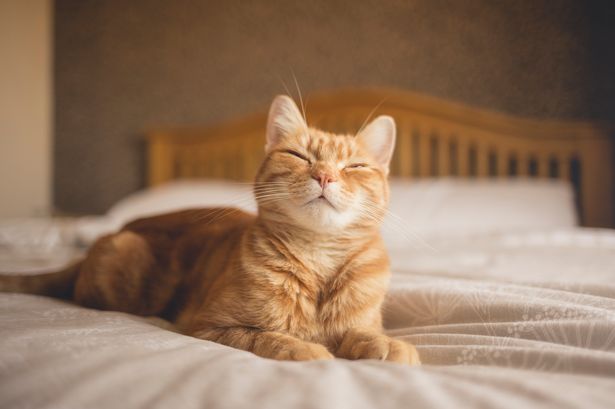World
Discover How Cats Subtly Communicate with Their Owners

Understanding how cats express their emotions can significantly enhance the bond between feline companions and their owners. Contrary to their reputation for being aloof, cats communicate through a variety of subtle signals that attentive owners can learn to interpret. According to Ross Hallifax, a representative from pet insurance specialist Healthy Pets, recognizing these behaviors fosters a deeper, more compassionate relationship with cats.
Decoding Feline Communication
Cats employ several methods to convey their feelings. Here are five key ways they communicate with their human companions.
1. Tail Language
A cat’s tail serves as a reliable indicator of their mood. An upright tail usually signifies a happy and confident cat, while a puffed-up tail can indicate fear or surprise. Conversely, a low, tucked tail often suggests anxiety or a sense of threat. Rapid tail movements from side to side may signal agitation or frustration, while slow swishing can indicate playfulness or focus.
2. Vocalizations
Interestingly, adult cats rarely meow at one another; this behavior is largely learned from interactions with humans. A short, soft meow can be a friendly greeting, while louder and more persistent meows often indicate hunger, boredom, or a desire for attention. Additionally, the comforting sound of a cat’s purr generally signifies contentment, though some cats may also purr when they are unwell or anxious as a means of self-soothing.
3. Scent Marking
When a cat rubs against their owner, it signifies love and trust. This behavior marks the person with the cat’s scent, creating a sense of familiarity and reassurance. Research indicates that cats can identify their owner’s scent, reinforcing the importance of olfactory signals in feline communication.
Interpreting Body Language
Cats also use their ears and eyes to express their emotions. Fully open eyes indicate alertness, excitement, or agitation, while partially or fully closed eyes suggest relaxation and comfort. A slow blink is an affectionate gesture, indicating safety and trust. Ears positioned forward can signal happiness or curiosity, whereas flattened ears often indicate fear or aggression. Relaxed ears typically suggest contentment.
4. Sleeping Positions
The way a cat chooses to sleep can reveal much about their sense of safety and happiness. A cat curled up is conserving warmth while feeling secure, while a cat sleeping belly-up displays deep trust. If a cat naps on their owner or nearby, it indicates comfort and contentment in their presence.
As Ross Hallifax points out, “Whether it’s a blink or a subtle tail twitch, cats are constantly communicating in ways we often overlook.” This year, on August 8, the theme of International Cat Day is Cat Welfare, highlighting the importance of understanding the subtle ways in which cats communicate with humans. Owners are encouraged to tune in to their cats’ unique expressions and build a stronger bond with their furry friends.
By paying attention to these signals, owners can significantly enhance their relationships with their cats, paving the way for a deeper understanding of their beloved pets.
-

 Entertainment2 months ago
Entertainment2 months agoIconic 90s TV Show House Hits Market for £1.1 Million
-

 Lifestyle4 months ago
Lifestyle4 months agoMilk Bank Urges Mothers to Donate for Premature Babies’ Health
-

 Sports3 months ago
Sports3 months agoAlessia Russo Signs Long-Term Deal with Arsenal Ahead of WSL Season
-

 Lifestyle4 months ago
Lifestyle4 months agoShoppers Flock to Discounted Neck Pillow on Amazon for Travel Comfort
-

 Politics4 months ago
Politics4 months agoMuseums Body Critiques EHRC Proposals on Gender Facilities
-

 Business4 months ago
Business4 months agoTrump Visits Europe: Business, Politics, or Leisure?
-

 Lifestyle4 months ago
Lifestyle4 months agoJapanese Teen Sorato Shimizu Breaks U18 100m Record in 10 Seconds
-

 Politics4 months ago
Politics4 months agoCouple Shares Inspiring Love Story Defying Height Stereotypes
-

 World4 months ago
World4 months agoAnglian Water Raises Concerns Over Proposed AI Data Centre
-

 Sports4 months ago
Sports4 months agoBournemouth Dominates Everton with 3-0 Victory in Premier League Summer Series
-

 World4 months ago
World4 months agoWreckage of Missing Russian Passenger Plane Discovered in Flames
-

 Lifestyle4 months ago
Lifestyle4 months agoShoppers Rave About Roman’s £42 Midi Dress, Calling It ‘Elegant’









